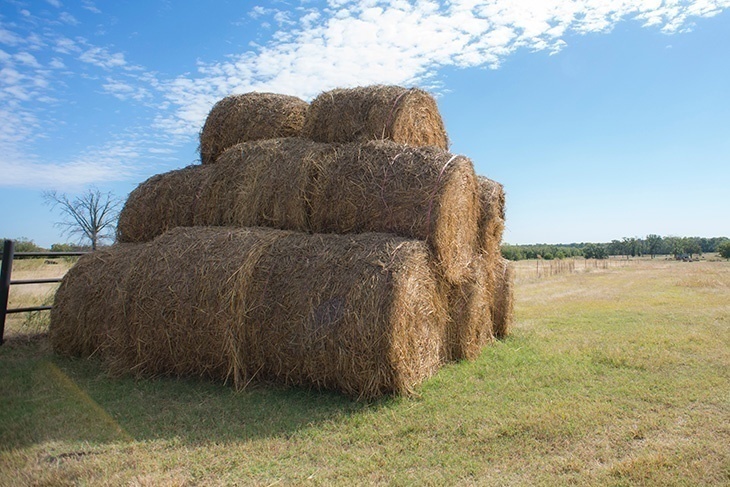
Source: Oklahoma State University | July 16, 2020
Expanding drought conditions and sporadic rainfall across much of Oklahoma mean livestock and forage producers need to be wary of the potential for nitrates building up in plants, Oklahoma State University experts said.
“Sorghum, sudangrass, haygrazers such as sorghum-sudangrass hybrids, johnsongrass, pearl millet and fescue are some of the forages that have a high potential for accumulating nitrates,” said Alex Rocateli, OSU Extension forage systems specialist. “Producers also need to be mindful of nitrate-accumulating weeds.”
OSU research-based recommendations on testing and management of forages susceptible to nitrate accumulation are available online and through all OSU Extension county offices.
The accelerated growth of forage following a drought-easing rainfall event is like a siren call to ranchers and forage producers, who are often anxious to cut the forage or turn out cattle onto the pasture. However, nitrate uptake is accelerated along with the fast-growing process of plants that have suffered drought stress. Research indicates it typically takes a week to 10 days after a good rain for plant metabolism to return to normal and accumulations begin to decrease.
“Producers need to exercise caution and test forages before cutting or grazing shortly after a drought-ending shower, otherwise nitrate toxicity could be a potential problem in their cattle herds,” said Glenn Selk, OSU Extension emeritus animal scientist and managing editor of the university’s popular Cow-Calf Corner newsletter and SUNUP television segment.
Clinical signs of nitrate toxicity are usually seen within a few hours of ingestion. The higher the dose, the faster an affected animal may exhibit signs. These may include:
- Abdominal pain.
- Scours.
- Weakness.
- Muscle tremors.
- Drooling of saliva.
- Blue discoloration of the mouth.
- Mouth breathing.
- The animal collapsing.
- Coma.
- Death.
Also, do not believe the myth that the time of day of cutting affects the nitrate concentration in summer annuals being harvested.
“This harvesting practice was based on the assumption that the plant continues soil nitrate uptake during nighttime hours, followed by accelerated conversion of the nitrate to protein during daylight hours,” Rocateli said.
OSU animal science research conducted by Selk, Bob LeValley, Greg Highfill and others in 2008 found time of day of harvest did not significantly impact nitrate concentration or proportion of dangerous samples.
“This myth has held on through the years, but don’t be led into a false sense of security thinking that forages cut in the afternoon or evening are safer,” Selk said.
Other key facts to consider:
- Nitrates typically will be highest in the lowest third of the plant stem so do not harvest or allow livestock to graze the lower parts of forage.
- Sample feed before harvest or feed out. In-field qualitative tests are readily available. Most commercial laboratories also offer analyses to obtain the exact nitrate level in forage samples.
- If risky forages absolutely must be fed to livestock, use dilution feeding – the mixing of high-nitrate forages with those known to contain fewer nitrates.
